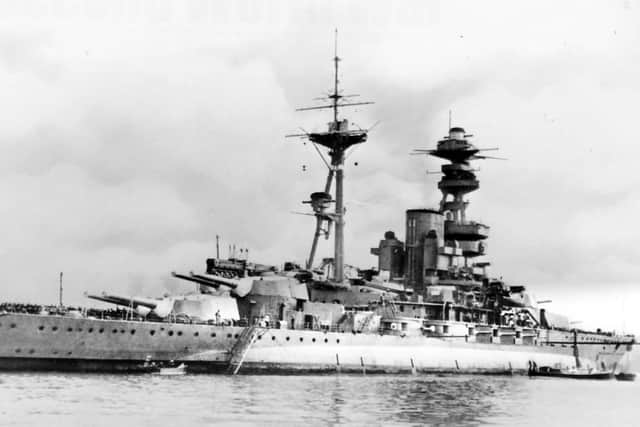Royal Navy wreck to be surveyed by divers 80 years after battleship sank with loss of 800 lives


HMS Royal Oak was torpedoed by a German submarine off Orkney six weeks into the Second World War.
The battleship was struck on the night of October 14 1939 by the U-boat while anchored at the wartime home of the fleet, Scapa Flow.
Advertisement
Hide AdAdvertisement
Hide AdShe sank in a matter of minutes, killing 834 men, including more than 100 boy sailors.
HMS Royal Oak was launched in 1914 and saw combat in the Battle of Jutland. After service in the Atlantic and the Mediterranean she became the flagship of the Second Battle Squadron in Portsmouth.
Ahead of the 80th anniversary of the loss of the ship later this year, a team of volunteer civilian divers have been granted permission to dive the wreck by the Secretary of State for Defence.
The project at the war grave is part of a collaboration with the Royal Oak Association and the Royal Navy to document the last resting place of the men who lost their lives that day.
Advertisement
Hide AdAdvertisement
Hide AdThe team plans to use state-of-the-art underwater imagery techniques to produce high-quality photography and video.
The divers are also aiming to use new 3D photogrammetry techniques to allow them to produce 3D models of the wreck.
They hope that by sharing the imagery with the relatives of those who died, as well as the wider public, the Royal Oak tragedy will not be forgotten.
Survey organiser Emily Turton said: 'The wreck of HMS Royal Oak is the final resting place of 834 men and boys. As the most intact underwater dreadnought-era battleship, she has an architectural grandeur befitting of any national memorial.
Advertisement
Hide AdAdvertisement
Hide Ad‘However, at the smaller end of the scale, artefacts pertaining to everyday life on board are scattered around the site, bringing home the human story of those lost.
‘The site is peaceful, yet vibrant and supports a thriving marine eco-system. It is both an honour and a privilege to get to know the site.’
Designated an official war grave, Royal Navy divers visit the wreck annually to pay respects to the lost sailors and fly a White Ensign.
Gareth Derbyshire, chair of the Royal Oak Association, said the group feels the new survey will be of great historical value.
Advertisement
Hide AdAdvertisement
Hide AdHe said: ‘There are few details of the ship in the public domain, despite the huge loss of life. We believe that the survey will not only be of significant interest to those with a decent connection to the ship, but also act as an important means of ensuring that the history of the ship and the circumstances of its loss are available to future generations.’